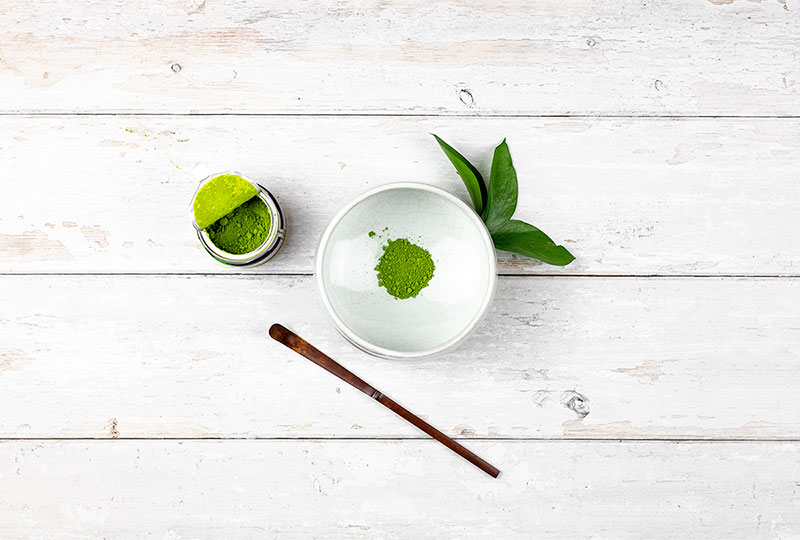Koicha Tea vs Usucha Tea
If you love drinking matcha, knowing how to make it properly will turn your regular teatime into a real ritual. Koicha and usucha are two main ways of making matcha. What is the difference? Let’s find out.
What is Koicha tea?
Koicha or “thick tea” is a way of preparing matcha tea powder. In Japanese language, word “koicha” literally means thick tea. As the name suggests, koicha is a thick liquid. It’s made with more matcha tea powder and less amount of water. Tea powder is whisked using a special bamboo whisk called chasen. However, this is not the usual way of preparing daily matcha. It’s mostly reserved for a Japanese tea ceremony. If you decide to make koicha at home, always use only the highest-grade ceremonial grade matcha tea.
Koicha is usually prepared with double the amount of matcha tea powder compared to usucha and much less water. The exact amount of tea powder and water may vary, but it will usually be around 3-4 grams of tea powder per 1.1.5 oz of water.
What is Usucha tea?
Usucha is the opposite. The word usucha translates into “thin tea”. It is a standard way of preparing matcha tea powder. It’s made with less matcha powder and more water. For making usucha you should use about 2 scoops of matcha tea powder. You will need a chasen too. Chasen for making usucha has more prongs. More prongs will help you make a frothy tea without lumps.
Which is better for matcha?
Koicha and usucha are ways of preparing matcha tea powder. In other words, matcha is the type of powdered green tea, and koicha and usucha are ways of preparing it. Matcha is made from shaded tea leaves, that are de-veined and de-stalked and ground into a silky powder. This tea powder is used in traditional tea ceremonies in Japan. If you have a tin of matcha powder and don’t know which way to use – usucha or koicha – here are some tips.
1. Tea powder grade
Koicha-grade tea powder is slightly different from usucha-grade tea powder. If you want to make koicha always choose only a high-grade tea with a sweeter scent and flavor and bright green color. Only use matcha of the highest quality, with vibrant green color and sweet intense scent. Preferably, it should be hand-picked and made from older tea plants. Usually, a tin of a special koicha matcha will state it’s suitable for making koicha. For making usucha tea, you can use any grade of matcha, even the latte-grade. However, the higher the grade, the better your tea will be – sweeter and less astringent. Matcha is never served with sugar.
2. The type of utensils
To make a bowl of matcha, you will need a special matcha whisk (chasen), a sifter and matcha bowl. Chasen can have as little as 16 prongs, and as many as 120 prongs. Some whisks may have 3 instead of 3 rows of prongs. A whisk with 16 prongs may not be suitable for making frothy usucha, but the one with 48 prongs could be used for both.
3. When do you want to enjoy it
If you want to drink matcha daily, usucha is easier to make and drink. But if you want to incorporate tea meditation into your daily or weekly routine, koicha thick tea may be better. Using more tea powder means you will ingest more caffeine too, together with more L-theanine, an amino acid that may provide a calming effect. Besides, you will need to pay attention to every step of making your tea. That’s why matcha, especially thick matcha, may be great for your meditations.
4. Which consistency do you prefer?
Koicha is very thick and more intense than usucha. Think of a thick, but silky syrup and you may get an idea. It should have no foam. Koicha is whisked using circular hand movements, and up and down movements. Usucha is whisked using fast W movements. It should have a lot of foam too. Both should be equality tasty.
5. How to serve it
Although high-quality matcha powder is always sweet and full of umami flavor, prepared matcha will have a very intense taste. Both koicha and usucha are usually served with special sweets that are eaten before drinking the tea. However, you may leave them out when drinking matcha usucha.
Want to learn how to make matcha at home? Find out here.



